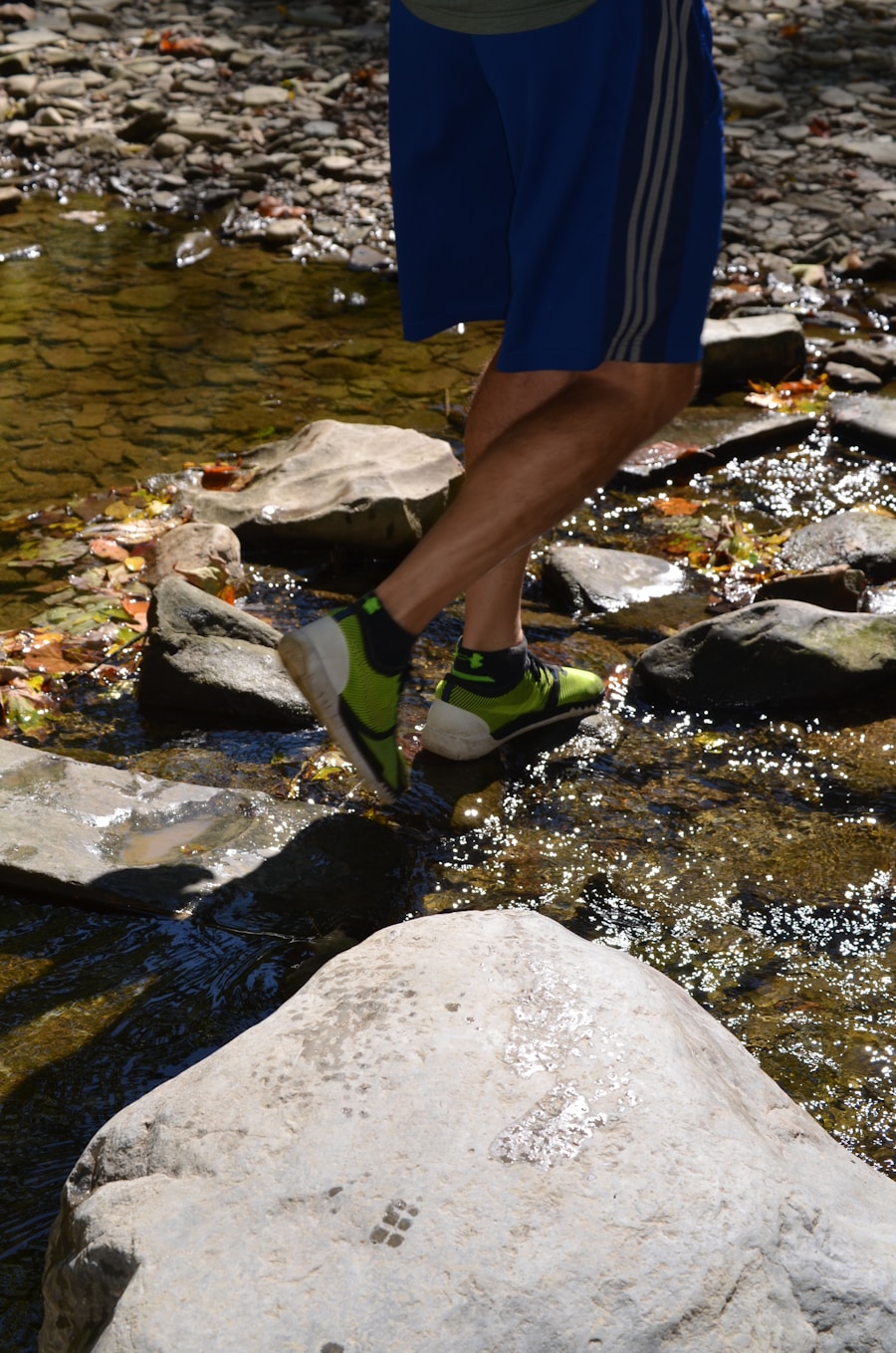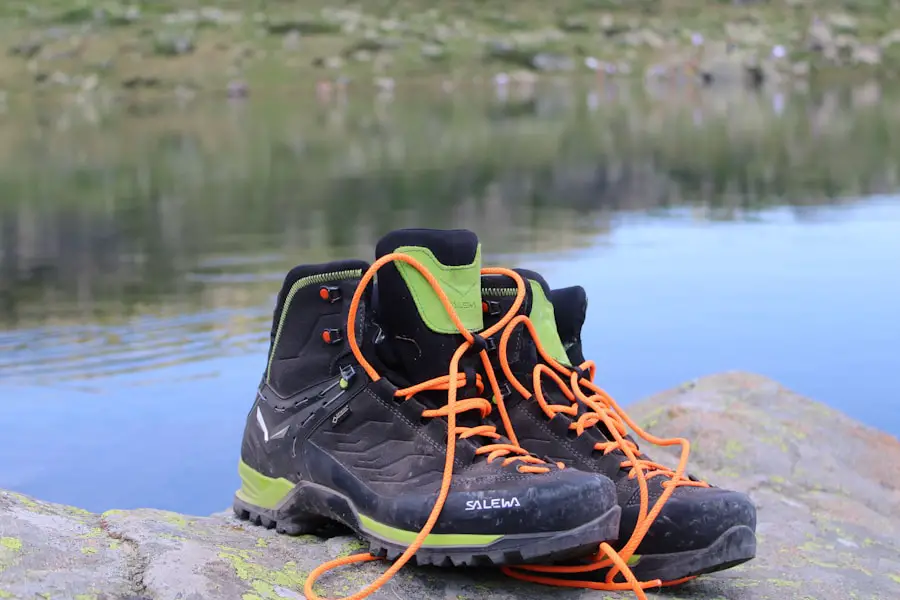Hiking shoes are not merely functional items; they are a critical component of a hiker’s overall experience. The style of hiking shoes can significantly influence comfort, performance, and even safety on the trails. A well-chosen pair of hiking shoes can enhance traction, provide necessary support, and protect the feet from various environmental hazards.
The right style can also reflect personal preferences and align with the specific demands of different hiking conditions. For instance, a lightweight trail runner may be ideal for fast-paced hikes on well-maintained paths, while a sturdy boot is essential for rugged terrains where ankle support is paramount. Moreover, the aesthetic aspect of hiking shoes should not be overlooked.
Many outdoor enthusiasts appreciate footwear that not only performs well but also looks good. The market offers a plethora of designs, colors, and materials that cater to diverse tastes. This variety allows hikers to express their individuality while still prioritizing functionality.
Understanding the importance of style in hiking shoes means recognizing that they serve as both a practical tool and a fashion statement, bridging the gap between performance and personal expression.
Key Takeaways
- The right hiking shoe style is important for comfort, support, and protection on the trail.
- Consider factors like terrain, weather, and personal preferences when choosing hiking shoes.
- Different hiking shoe styles include low-cut, mid-cut, and high-cut options, each with their own benefits.
- Properly fitting hiking shoes are essential for preventing blisters, hot spots, and discomfort on the trail.
- Regular maintenance and care of hiking shoes can extend their lifespan and performance on the trail.
Choosing the Right Hiking Shoe for Your Needs
Selecting the appropriate hiking shoe involves a careful assessment of individual needs and preferences. Factors such as the type of terrain, duration of hikes, and personal comfort levels play crucial roles in this decision-making process. For example, if one plans to tackle rocky trails or steep inclines, a shoe with robust ankle support and a rugged sole is essential to prevent injuries and ensure stability.
Conversely, for leisurely walks on flat surfaces, a lightweight shoe with breathable materials may suffice. Additionally, it is vital to consider the climate and weather conditions in which the hiking will take place. Waterproof shoes are indispensable for wet or muddy environments, while breathable mesh options are preferable for hot, dry climates.
Furthermore, understanding one’s foot shape—whether wide, narrow, or high-arched—can significantly impact comfort levels during hikes. Trying on various styles and brands can help identify which shoe provides the best fit and support for individual foot characteristics.
Exploring Different Hiking Shoe Styles

The world of hiking footwear is diverse, encompassing various styles tailored to specific activities and environments. Hiking shoes can generally be categorized into three main types: hiking boots, trail runners, and approach shoes. Hiking boots are typically characterized by their high ankle support and rugged construction, making them ideal for challenging terrains and long-distance hikes.
They often feature durable materials that provide protection against rocks and debris while offering excellent traction on uneven surfaces. Trail runners, on the other hand, are designed for speed and agility on well-maintained trails. These shoes are lightweight and often feature a more flexible sole compared to traditional hiking boots.
They are perfect for those who prioritize quick movements and comfort over heavy-duty protection. Approach shoes blend elements of hiking shoes and climbing footwear, providing versatility for hikers who may encounter technical sections requiring both grip and stability. Each style serves a unique purpose, allowing hikers to choose footwear that aligns with their specific activities and preferences.
How to Properly Fit Hiking Shoes
| Brand | Model | Size | Weight | Material |
|---|---|---|---|---|
| Merrell | Moab 2 Vent | Men’s 10 | 2 lbs | Leather and mesh |
| Salomon | X Ultra 3 | Women’s 8 | 1.5 lbs | Synthetic |
| Keen | Targhee III | Men’s 9.5 | 2.2 lbs | Leather and textile |
Achieving the perfect fit for hiking shoes is paramount to ensuring comfort and preventing injuries during outdoor adventures. When trying on shoes, it is advisable to wear the same type of socks that will be used during hikes to accurately gauge fit. A proper fit should allow for some wiggle room in the toe box while ensuring that the heel remains snug without slipping.
It is essential to walk around in the shoes to assess how they feel during movement; any discomfort or pressure points should be addressed before making a purchase. Another critical aspect of fitting hiking shoes is considering the time of day when trying them on. Feet tend to swell throughout the day due to activity and heat, so trying on shoes in the afternoon or after a walk can provide a more accurate representation of how they will feel during extended use.
Additionally, some brands may have different sizing standards; therefore, it is wise to consult sizing charts and try multiple brands to find the best fit. Ultimately, investing time in finding the right fit can make all the difference in enjoying long hikes without pain or discomfort.
Maintaining and Caring for Your Hiking Shoes
Proper maintenance of hiking shoes is essential for prolonging their lifespan and ensuring optimal performance on the trails. Regular cleaning is crucial, especially after hikes in muddy or wet conditions. Removing dirt and debris from the soles helps maintain traction and prevents wear on the shoe’s materials.
A soft brush or cloth can be used to clean the exterior, while insoles should be removed and aired out to prevent odor buildup. In addition to cleaning, it is important to periodically check for signs of wear and tear. Inspecting the soles for tread loss or damage can help identify when it’s time for a replacement.
Applying waterproofing treatments can also enhance the shoe’s ability to repel water and protect against moisture damage. Storing hiking shoes in a cool, dry place away from direct sunlight will help preserve their materials and prevent deterioration over time. By taking these steps, hikers can ensure their footwear remains reliable and ready for any adventure.
Pairing Hiking Shoes with Different Outfits

Hiking shoes have evolved beyond mere functionality; they can now complement various outfits while maintaining comfort during outdoor activities. For casual day hikes or urban explorations, pairing lightweight trail runners with breathable shorts or moisture-wicking leggings creates a stylish yet practical look. Opting for vibrant colors or unique patterns can add a touch of personality to an otherwise utilitarian outfit.
For more rugged adventures or multi-day treks, combining sturdy hiking boots with durable cargo pants or outdoor-specific apparel enhances both style and performance. Layering with moisture-wicking base layers and insulated jackets can create a cohesive look that is both functional and fashionable. Accessories such as hats or backpacks can further enhance the outfit while providing additional utility on the trail.
By thoughtfully pairing hiking shoes with appropriate clothing choices, outdoor enthusiasts can enjoy both style and comfort during their adventures.
Tips for Breaking in New Hiking Shoes
Breaking in new hiking shoes is an essential step that should not be overlooked before embarking on longer hikes. New footwear often requires time to conform to the shape of one’s feet, which can help prevent blisters and discomfort during extended use. A gradual approach is recommended; starting with short walks around the neighborhood allows wearers to assess how the shoes feel without committing to a full day on the trails.
Incorporating different terrains into the breaking-in process can also be beneficial. Walking on various surfaces—such as pavement, gravel paths, or even gentle inclines—can help identify any pressure points or areas that may need adjustment. Additionally, wearing appropriate socks during this period can further enhance comfort levels as they provide cushioning and reduce friction against the skin.
By taking these steps to break in new hiking shoes properly, hikers can ensure a more enjoyable experience when hitting the trails.
Hiking Shoe Style for Different Types of Terrain
The type of terrain encountered during hikes plays a significant role in determining the most suitable hiking shoe style. For rocky or uneven trails, shoes with robust soles featuring deep lugs provide necessary traction and stability. Hiking boots with reinforced toe caps offer added protection against sharp rocks while ensuring ankle support on challenging inclines.
In contrast, smooth or well-maintained paths may benefit from lightweight trail runners that prioritize speed and agility over heavy-duty protection. These shoes often feature breathable materials that keep feet cool during warmer months while still providing adequate grip on less demanding surfaces. For mixed terrain that includes both rocky sections and smoother trails, approach shoes offer versatility by combining elements from both hiking boots and trail runners.
Understanding how different shoe styles cater to specific terrains allows hikers to make informed decisions about their footwear choices, ultimately enhancing their overall experience in nature. Whether navigating steep mountain paths or leisurely strolls through forests, selecting the right shoe style ensures comfort, safety, and enjoyment on every hike.
If you’re planning a hiking trip, it’s important to know how to properly wear hiking shoes to ensure a comfortable and safe experience. One helpful article to check out is
